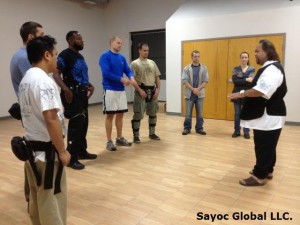Guro Joe C.’s notes:
Attendance: Joe C. instructing, Alex, Brian, Ryan, Dave, Asim, Frank
We spent the begining of class reping panuntukan set 1 of 12 scarecrow for memorization. We then rotated partners every 10-15mins working with increasing resistace from the reciever. Starting with static hands up to passive resistance with both hands to actively trying not to die without becoming offensive yet. We also tried them with the reciever in a tradtional left boxing lead. The sequences work just fine if only in a different direction on occasion. It also proved necessary to maintain an outside lead foot position in the open stance just like in boxing. We touched briefly on the importance of forward pressure or movement and the use of foot work in a panuntukan application including Pamana Tuhon’s sweeping footwork from his visit.
